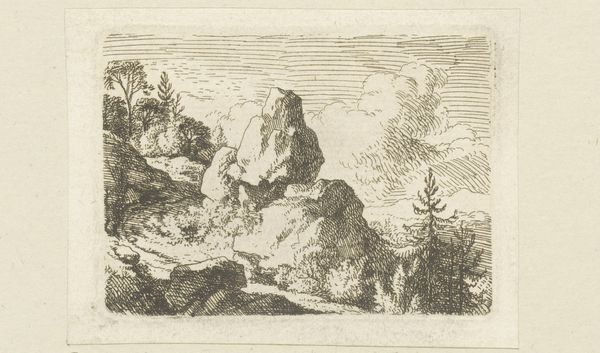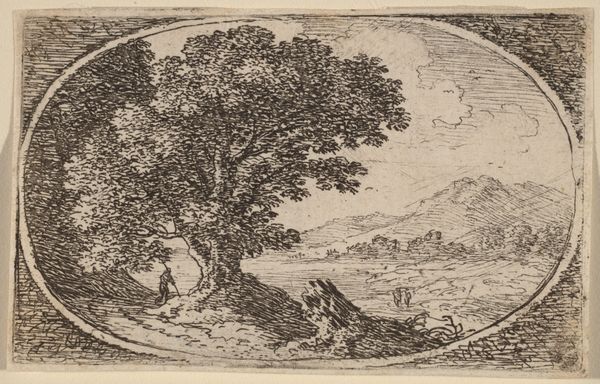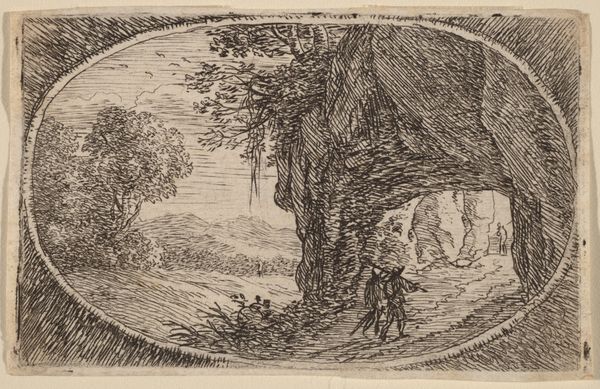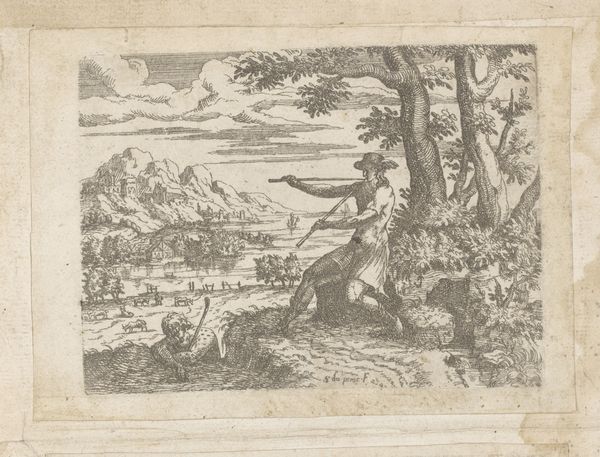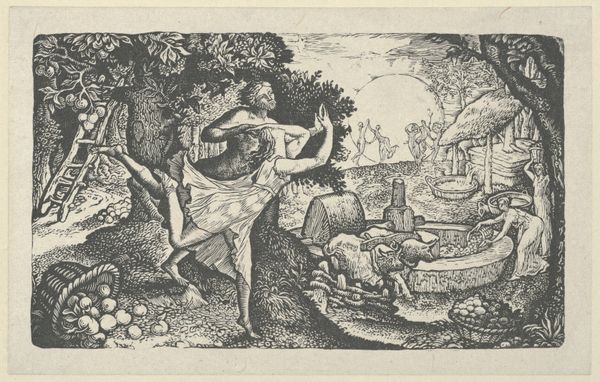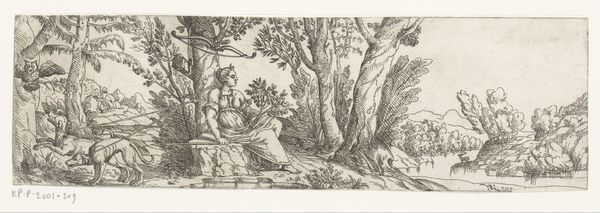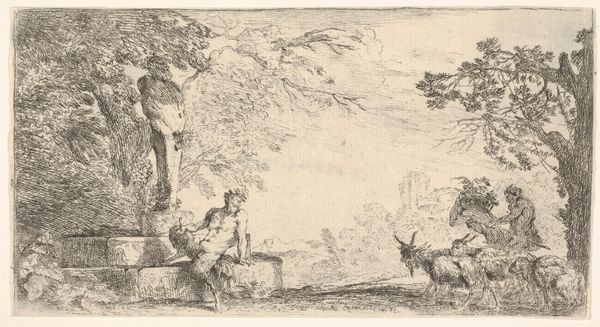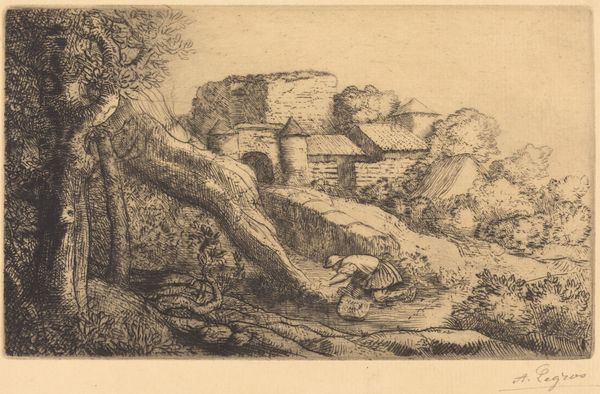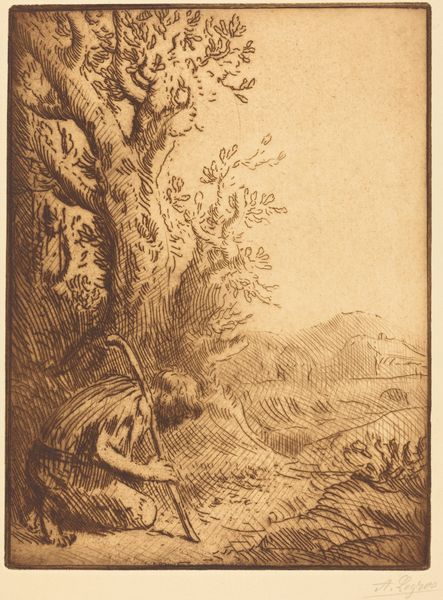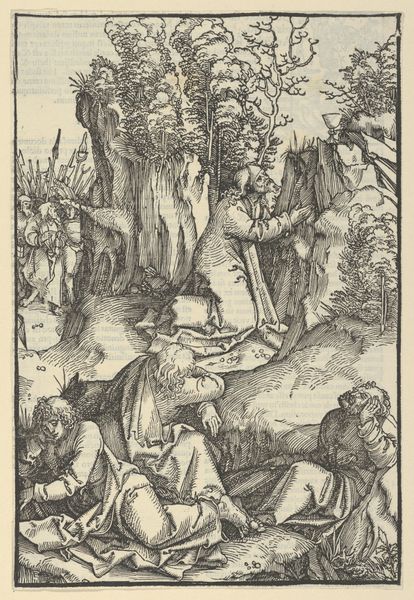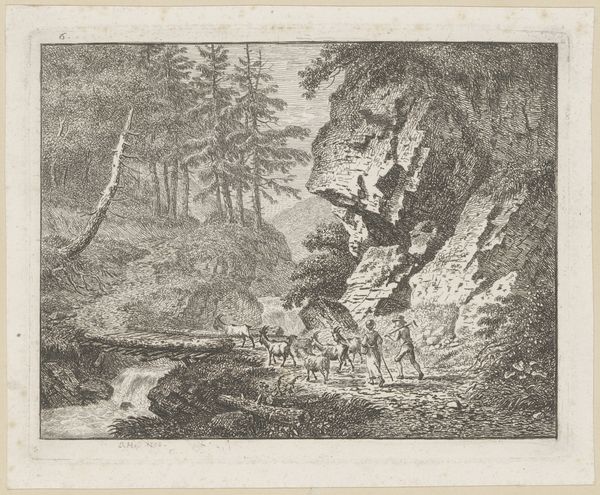
engraving
#
medieval
#
landscape
#
figuration
#
engraving
Dimensions: height 42 mm, width 100 mm
Copyright: Rijks Museum: Open Domain
Editor: So, here we have "Paar in gesprek in een berglandschap," made sometime between 1600 and 1700 by an anonymous artist. It's an engraving, currently held at the Rijksmuseum. The landscape is really striking, it has a sort of timeless quality. What do you see in this piece, looking at it through your expert eyes? Curator: What immediately grabs my attention is the engraving itself. Think about the labor involved. Someone meticulously carving into a metal plate to create this image. This wasn’t about high art in the traditional sense. It’s a commodity. A reproducible image made for consumption, reflecting, perhaps, the burgeoning merchant class and their desire for… picturesque scenery they may never have seen in person. Editor: Interesting. So, the *process* of making the art is key here, not necessarily some deep meaning embedded in the scene itself? Curator: Precisely. And think about the materials used – the metal plate, the ink, the paper. Each chosen for its properties, its cost, its ability to convey this scene. The mountainous background suggests both a longing for something beyond daily life and the investment and time for recreation away from an urban center. Do you notice the small figures almost appear to emerge out of that constructed landscape? Editor: They almost seem part of the scene, rather than dominating it, right. Were engravings like this popular back then? Curator: Mass production was not the objective; a steady efficient construction and the relatively portability for dissemination throughout communities that could afford luxury but could also see value in an aesthetic object to create and convey conversations about taste. It reflects a shift towards wider participation in culture. Editor: I guess I never thought about it that way before. I was always so focused on *who* made the art, instead of *how* it was made. Curator: Focusing on the materials and the process gives you a much more grounded perspective. Editor: Right! Thinking about the engraver, the paper, the audience... it really changes how I understand this "landscape." Curator: Exactly! That interplay, the dialogue between artist, material, and society, that’s where the real meaning lies.
Comments
No comments
Be the first to comment and join the conversation on the ultimate creative platform.
